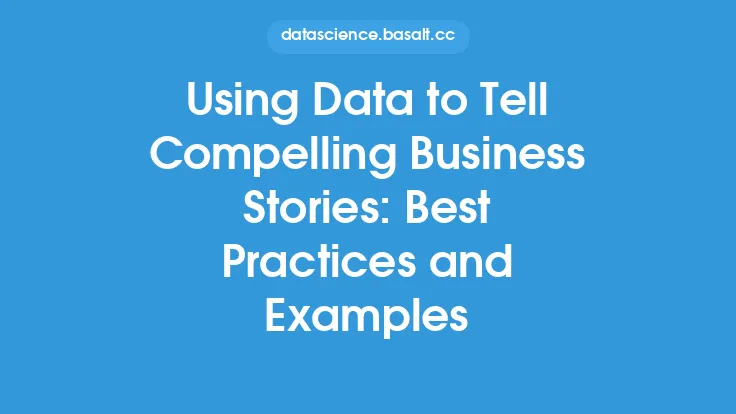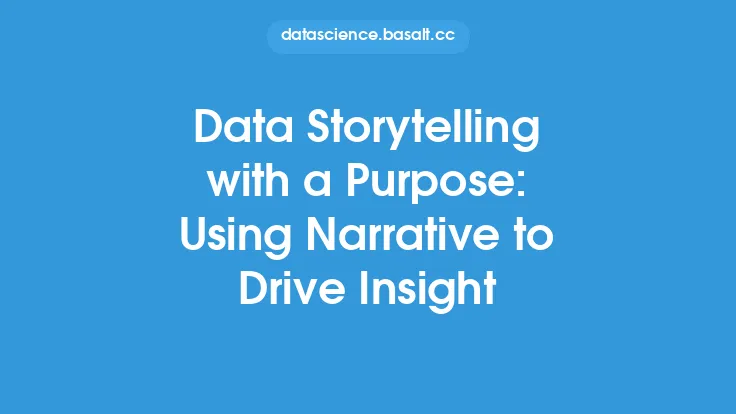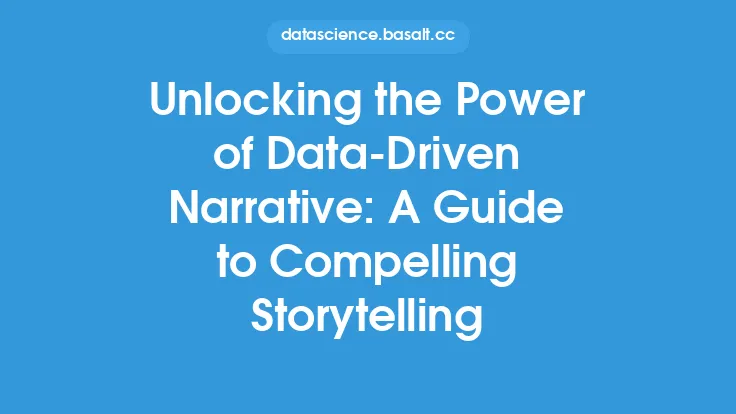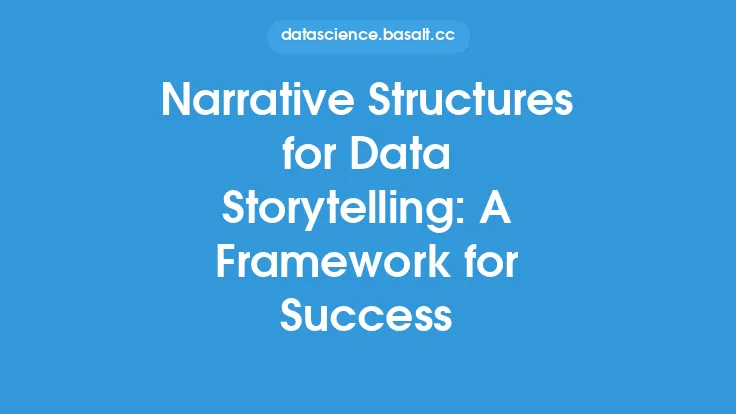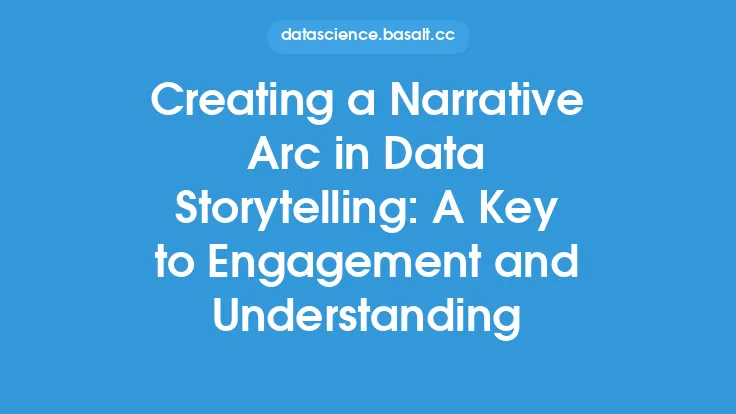When it comes to conveying complex information, data can often be a double-edged sword. On one hand, it provides a wealth of insight and knowledge, but on the other hand, it can be overwhelming and difficult to interpret. This is where the art of using data to tell a story comes in – a technique that has become increasingly important in today's data-driven world. By using narrative techniques to present data, individuals can create a compelling and engaging story that resonates with their audience, making it easier to understand and act upon the information being presented.
Introduction to Narrative Techniques
Narrative techniques are the methods used to convey a story or message through data. These techniques can include a variety of elements, such as visualization, annotation, and interactive elements, all of which work together to create a cohesive and engaging narrative. The key to effective narrative techniques is to create a story that is both informative and engaging, allowing the audience to easily understand and interpret the data being presented. This can be achieved through the use of clear and concise language, intuitive visualizations, and a well-structured narrative that flows logically and is easy to follow.
Best Practices for Narrative Techniques
There are several best practices to keep in mind when using narrative techniques to tell a story with data. First and foremost, it's essential to know your audience and tailor your narrative accordingly. This means understanding their level of knowledge and expertise, as well as their interests and motivations. By doing so, you can create a narrative that resonates with them and is relevant to their needs. Another important consideration is to keep your narrative focused and concise, avoiding unnecessary complexity and clutter. This can be achieved through the use of clear and simple language, as well as intuitive visualizations that effectively communicate the key insights and findings.
The Role of Visualization in Narrative Techniques
Visualization plays a critical role in narrative techniques, as it provides a powerful way to communicate complex information in a clear and concise manner. There are many different types of visualizations that can be used, including charts, graphs, maps, and infographics, each of which has its own unique strengths and weaknesses. The key to effective visualization is to choose the right type of visualization for the data being presented, and to use it in a way that is intuitive and easy to understand. This can be achieved through the use of clear and concise labels, intuitive color schemes, and interactive elements that allow the audience to explore the data in more detail.
The Importance of Annotation and Context
Annotation and context are also essential elements of narrative techniques, as they provide additional information and insight that can help to clarify and interpret the data being presented. Annotation can include elements such as labels, titles, and captions, which can be used to provide additional context and explanation. Context, on the other hand, refers to the surrounding information and narrative that helps to frame and interpret the data. This can include elements such as introductory text, headings, and summaries, which can be used to provide a clear and concise overview of the key insights and findings.
Technical Considerations for Narrative Techniques
From a technical perspective, there are several considerations to keep in mind when using narrative techniques to tell a story with data. One of the most important considerations is the choice of tools and technologies, which can range from simple spreadsheet software to complex data visualization platforms. The key is to choose a tool that is intuitive and easy to use, and that provides the necessary features and functionality to create a compelling and engaging narrative. Another important consideration is data quality and integrity, which is essential for creating a narrative that is accurate and reliable. This can be achieved through the use of data validation and cleaning techniques, as well as regular data updates and refreshes.
Common Pitfalls to Avoid
There are several common pitfalls to avoid when using narrative techniques to tell a story with data. One of the most common pitfalls is the use of overly complex or confusing visualizations, which can be difficult to interpret and understand. Another common pitfall is the lack of clear and concise language, which can make it difficult for the audience to follow and understand the narrative. Additionally, the use of too much data or information can be overwhelming and cluttered, making it difficult to identify the key insights and findings. By avoiding these common pitfalls, individuals can create a narrative that is clear, concise, and engaging, and that effectively communicates the key insights and findings.
Conclusion
In conclusion, using data to tell a story is a powerful technique that can be used to convey complex information in a clear and concise manner. By using narrative techniques such as visualization, annotation, and interactive elements, individuals can create a compelling and engaging story that resonates with their audience. By following best practices such as knowing your audience, keeping your narrative focused and concise, and using clear and simple language, you can create a narrative that is both informative and engaging. Additionally, by avoiding common pitfalls such as overly complex visualizations and lack of clear language, you can ensure that your narrative is effective and easy to understand. Whether you're a data analyst, business professional, or simply someone looking to communicate complex information, using data to tell a story is a technique that can help you to achieve your goals and effectively communicate your message.
